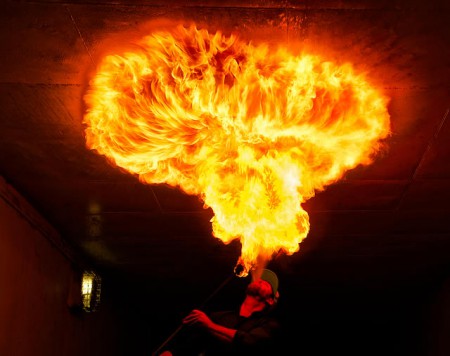
I’m not an introvert. I’m an extreme extrovert (top-of-the-charts ENFP on the Myers-Briggs) and thus I have a constant trouble with spiritual practices which are mostly geared towards contemplative extroverts. Silent prayers, quiet study, and TAG time (Time Along w/God) are helpful correctives to my tendencies but they don’t speak to my particular perspective. I struggle with them often and openly: hence why I blog for public discussion rather than journal alone.
As I was teaching spiritual disciplines to a Sunday school class, one of the folks turned my conception of breath prayers on its head and I thought I would share.
Breath Prayers are picking a short phrase and repeating it alongside one’s breath, according to Prayer: Finding the Heart’s True Home by Richard Foster. As I taught it to the class, breath prayers are a form of prayer where you come up with a short couplet or phrase, speaking half of it when you breathe out and half of it when you breath in. The classic examples are:
(Breathe out) Jesus Christ, Son of God, (Breathe in) Have Mercy on Me. (A passage from Luke 18:9-14)
(Breathe out) I no longer live, (Breathe in) but Christ lives in me.
(Breathe out) Deep calls to deep, (Breathe in) in the roar of your waters (A passage from Psalm 42)
Many of the forms I’ve seen and been taught revolve around breathing out bad personal failings and breathing in good things:
(Breathe out) Breathe out worry, (Breathe in) breathe in stillness.
(Breathe out) Take my anxiety, (Breathe in) grant me peace.
Then at the end of the lesson, something happened that might be some teacher’s worst fear but was my great joy: my Sunday school participant then turned my teaching on its head!
She said that in the Buddhist tradition (that she had experience in), Buddhists use their breath prayers as a form of seeking social justice. Instead of breathing out bad tendencies and breathing in good things, they would breathe in the sins of the world and breathe out corrections. In this way, their very prayers became vehicles for transformation as they believed they took in dangerous concepts and transformed them in their very bodies and breath.
For example:
(Breathe in) Injustice and suffering, (Breathe out) be now a beloved community.
(Breathe in) Fear and anxiety, (Breathe out) become peace and stillness.
(Breathe in) War and Violence, (Breathe out) be no more.
(Breathe in) When one wants to cease relationship (Breathe out) draw them together again.
There’s many different ways to formulate it, but I hadn’t previously thought about reversing a breath prayer to taking in the sins of the world and breathing out corrections and hopes for justice.
It was helpful to me; I hope it is helpful to you.
What’s your favorite breath prayer? If you were to transform it to be outward-focused like the above examples, what might it become?


Greetings from the other end of the extrovert-introvert scale.
I’m surprised you didn’t know this already, Jeremy! What did they teach you M.Divs about other religious traditions at BU if not socially engaged Buddhism? *grin*. It’s another case that shows why clergy preparation in Christian traditions needs to prepare us for a religiously pluralistic world.
Anyway, I wanted to add that this reversal shouldn’t be understood as some sort of magical exchange where one can sit in a room and breathe and pray and think, “Ok then, I’ve done my bit for justice today!” I’ve seen some casual appropriation of this sort of approach to breath prayers go that direction.
The socially engaged Buddhist uses this prayer to center the mind/body on the 8-fold path in a way that allows the practice of mindfulness to contemplate how they can be a conduit for correct actions/thoughts/intentions/etc. throughout the entirety of their living. It’s not a compartmentalized activity of ‘ok now I’m meditating before beginning my day’ but ‘ok, now I’m centering my being in a course of mindful action that carries through my day even when I’m done meditating.’